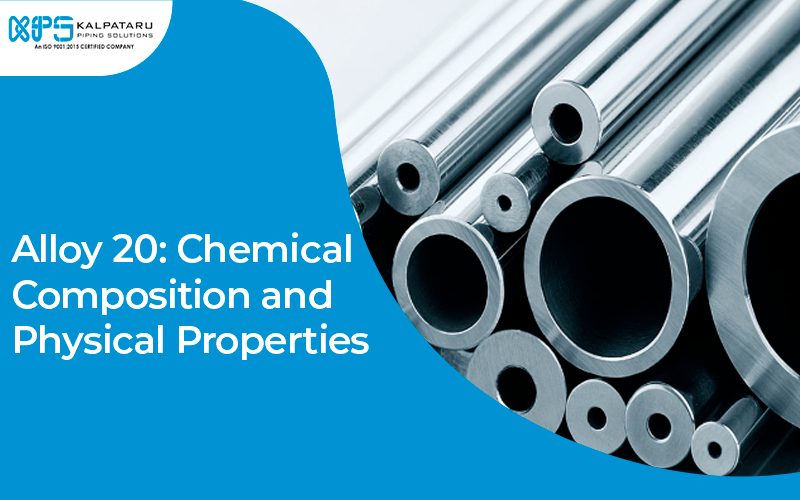
Austenitic alloy – Alloy 20 is based on nickel, iron, and chromium and has high corrosion resistance in settings including sulfuric acid and other hostile fluids. This alloy is stabilized with niobium to stop intergranular corrosion. When carefully compared to higher nickel-based alloys, Alloy 20 may offer possible cost savings while outperforming regular stainless steels.
Alloy 20 Chemical Composition:
ElementContent (%)Iron, Fe35Nickel, Ni32-38Chromium, Cr19-21Copper, Cu3-4Manganese, Mn≤2Molybdenum, Mo2-3Niobium, Nb≤1Silicon, Si≤1Carbon, C≤0.07Phosphorous, P≤0.045Sulfur, S≤0.035
Alloy 20 Physical Properties:
PropertiesMetricImperialDensity8.05 g/cm30.291 lb/in3
Alloy 20 Mechanical Properties:
PropertiesMetricImperialTensile strength (annealed)620 MPa89900 psiYield strength (annealed)300 MPa43500 psiElongation at break (annealed)41%41%
Nickel Alloy 20 Thermal Properties:
PropertiesMetricImperialThermal expansion co-efficient (@20-100°C/68-212°F)14.7 µm/m°C8.17 µin/in°FThermal conductivity12.3 W/mK85.4 BTU.in/hrft².°F
Industries and Applications:
Alloy 20 distinctive attributes find resonance in a multitude of industries. From chemical processing to pharmaceuticals, this alloy proves its mettle in various applications. We unravel the sectors that have harnessed the power of Alloy 20 and delve into specific use cases that highlight its adaptability and reliability.
Resistance to Corrosion:
One of Alloy 20 most remarkable features is its unparalleled resistance to corrosion. Delving into the alloy’s molecular structure, we uncover the mechanisms that empower Alloy 20 to withstand the harsh environments of chemical compounds, particularly those containing sulfuric acid. Through real-world examples and scientific insights, we illustrate how Alloy 20 stands as a stalwart guardian against the corrosive forces that can compromise other materials.
Fabrication and Heat Treatment:
The journey from raw materials to the final Alloy 20 product involves intricate fabrication techniques and carefully orchestrated heat treatments. We dissect the fabrication process, highlighting the steps that shape Alloy 20 into its final form.Furthermore, we investigate the impact of heat treatment in improving the mechanical characteristics of the alloy and ensuring that it fits the requirements of diverse applications.
It is possible to cold-work or hot-work alloy 20 using conventional techniques. Prior to forging, hot forged material should be heated to a temperature between 2100°F and 2250°F with rigorous temperature management to ensure that the material does not drop below 1800°F. After hot working, anneal the material by raising its temperature to between 1725°F and 1850°F for at least 30 minutes per inch of thickness, and then quench it in water.
When stress relief is sought, heat to a temperature below 1000°F and then quench with water once the appropriate time has passed at the temperature. Alloy 20 should be annealed at a temperature of 1725°F to 1850°F for 30 minutes per inch of thickness. By heating to 2100°F, a reduced hardness can be achieved, although this may not be good for the alloy’s ability to stabilize.
Alloy 20 is often welded using TIG, MIG, and submerged arc welding (SAW), with the appropriate filler metal (ER320LR for TIG, MIG, and SAW, and E320LR for SAW). When welding to higher-grade alloys like C276 and Alloy 22, or to dissimilar alloys like 316, AWS ERNiCrMo-3 may be used for TIG and MIG, whereas ENiCrMo-3 can be used for SAW.
Other Designations – Equivalent:
- ASME SB-462 – SB-464
- ASME SB-468
- ASTM B 462 – B 464
- ASTM B 468
- ASTM B 472 – B 474
- ASTM B 751


























